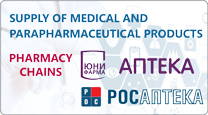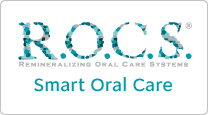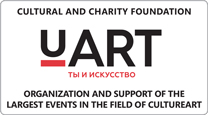A road to a pearl smile
 Elizaveta Nekrasova, a 4−year student of the Faculty of Dental
Medicine of the Stavropol State Medical University
|
Different nations dyed their teeth in various colors using the whole spectrum of the visible light, teeth were variously shaped, decorated with jewels, encrusted or crowned with metal for cosmetic purposes. For instance, on the Java Island the fashion was to remove the enamel from the outer surfaces of teeth with pumice to smoothen sharp edges and in some African tribes the males sharpened their teeth to look more attractive to women. The Mayans colored their teeth blue with turquoise and green with greenstones.
From black to white
The teeth color has always been of utmost importance as it has carried a certain meaning. For instance, in the Japanese culture the black color was a sign of loyalty and consistency as according to Buddhism this color “will never betray and can’t be colored differently.” The blackened teeth of young women served as a symbol of their internal loyalty to their husbands. In Japan the black teeth color also became popular among men, especially aristocracy, military commanders and samurai. This proved that people having such teeth could not serve two masters at the same time. The Japanese women painted their teeth black to also highlight the whiteness of their face skin.
The paint recipes were kept in secret in every family and passed on from generation to generation. Teeth blackening was common in Vietnam, East and Southeast Asia from Japan to Malaysia including South China. This fashion also reached Europe. There were various reasons for it, for instance, in England during the Elizabethan period one of the most expensive products was sugar and black crooked teeth – the consequences of uncontrollable sweets consumption – was a sign of high class glamour. Elizabeth herself never brushed her teeth, even more, to keep them ideally brown she polished them with special paste. In Italy of the XVI century teeth were blackened with antimony. And Catherine de Medici brought this habit to France. As for Russia the teeth subject to caries were also considered to be a mark of aristocracy. In the pagan period it was obligatory to blacken the bride’s teeth before the wedding.
From the beginning of the eighteenth century many nations changed the look of their teeth with encrustation. This technique was especially loved by the habitants of Borneo, Sumatra islands and the Mayans. They drilled the holes in the teeth and inserted there circles of copper, gold or mother of pearl. For a long period wearing golden crowns on teeth was considered fashionable among the people of Asian countries. In 2004 the head of Turkmenistan Turkmenbashi forbade the government officials to have golden teeth motivating his decision as “I’m proud that all my teeth are white. The golden crowns were popular in Turkmenia when we had a hard life. It’s time to give up on the survival of times past.”The epochs changed together with the beauty concept. Lack of
teeth, their deformation, beveled or sharpened edges did not seem esthetic
anymore. During the Renaissance the beauties could rarely brighten up their
faces with a smile. It is visible in the paintings
Development of the scientifically proven teeth whitening started at the beginning of the XIX century. Various chemical substances were being used in practical dentistry. In 1848 Doctor Truman was the first to offer using chlorinated lime. After lengthy experiments with different chloride forms at the 23rd session of the American Dental Association in 1884 a number of speakers proposed to use hydrogen peroxide for teeth whitening. Doctor Harlan was the first to do it and define the whitening history for the next 100 plus years. In 1852 Doctor Atkinson found a way of using 3% perozone (ether peroxide) for rinsing. And in 1877 a technique of external teeth whitening was described that has become an analogue of the modern approach. Calcium hydrochloride was used for whitening and the hydrogen peroxide started to be used for external whitening from 1884.
Aluminium chloride, sulphuric, hydrochloric, oxalic acid, lime chloride and even potassium cyanide were used as a whitening substance together with peroxide. The effect of the whitening substances is based on the oxidizers weakening or cleaving the bonds of dye molecules and lightening a tooth tone.
The peak of the pure white smile popularity was achieved in the XX century. The “Hollywood smile” term that was invented by a French dentist Charles Pincus became an analogue of the “beautiful smile” concept. Pincus had an understanding of not just medical but also esthetic component of a beautiful smile. So the Hollywood actors and actresses could proudly demonstrate even rows of pure white teeth on the screen, Pincus came up with a technology that was called Hollywood Laminates: ceramic overlays attached to actors’ teeth with a special adhesive powder used for dental prostheses. But the pure white smile appears not just due to the use of thin overlays. As early as the XX century the hydrogen peroxide concentrate became widely popular. Since then started the studies on the temperature dependence of dental pulp.By 1910 the whitening techniques have been improved by using
a warmed up instrument. In 1918 the acceleration of the whitening chemical
processes was documented during the fast raise of temperature in the hydrogen
peroxide solution
Unident TODAY magazine together with the Scientific Student Society of the Faculty of Medicine of the Peoples’ Friendship University of Russia is holding an article competition among the students of universities for the “History of Things” section.
The editors of the magazine invite the students of the dentistry faculties to participate in the competition. The best articles will be published in the Unident TODAY magazine. If you are interested in participation, please send us an email to market@unident.net or call 8 (917) 515 1060 and we’ll provide you with detailed information on the competition.
Back














